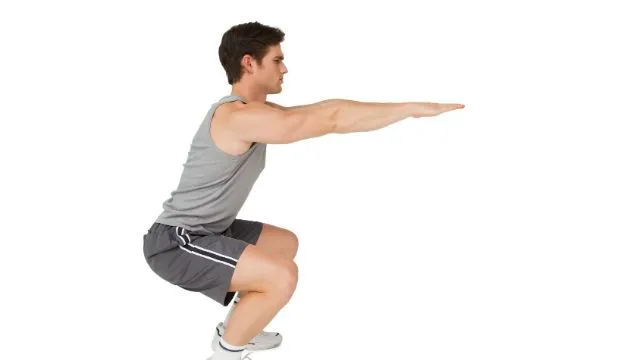
- Share on Facebook101
- Share on Pinterest
- Share on Twitter
While some people may assume that squatting is simply an exercise that you do to increase leg strength and tone your backside, in actuality, squats offer a wide variety of other benefits.
Regarding squats, leading health expert Dr. Joseph Mercola, states, “this is one exercise that should be a part of virtually everyone’s routine, as it’s relatively simple to perform, requires no equipment, and can be done just about anywhere.”
The following are five reasons to add squats to your workout plan as soon as possible.
Build strength
Along with developing muscle and increasing strength in your calves, hamstrings, quadriceps and glutes, doing squats also strengthens your abdominal muscles, and aids in your body’s ability to coordinate the movement of various muscle groups. Doing squats on a regular basis, according to Dr. Mercola, can promote an anabolic environment, which builds muscle mass throughout your entire body.
Enhance your body’s ability to burn fat
The more muscle you build, the easier it is for you body to burn fat, due to an increase in metabolism. As squatting can work so many of the body’s muscles, it can be a wonderful addition to a healthy weight loss plan. To stay in shape, especially as you age and lean muscle mass naturally diminishes, adding resistance training such as squats to your exercise routine is key.
Improve bone density
Squats can provide the important benefit of maintaining and even improving our bone density as we age. In a 2013 study published in the Journal of Strength & Conditioning Research, researchers found that postmenopausal women, who suffered from osteoporosis or osteopenia, improved the bone mineral density of the spine and neck by performing weighted squats.
Boost your digestion and encourage proper elimination
If you’re suffering from constipation, or have generally uncomfortable digestion, doing squats can help. The motion of squats promotes regular bowel movements, and also helps to move bodily fluids through your system. This improves both waste elimination, and the blood’s ability to deliver nutrients to various organs and systems.
Help reduce the damage done by sitting
Sitting for prolonged periods of time can be highly detrimental to your body. Not only does it wreak havoc on the joints, muscles and bones, it can also raise your risk of obesity, hypertension, heart disease and early death. The key is to break up sitting by getting up and moving around as often as possible. The workout that squatting provides, and the strength it builds in joints, muscles and bones, can be a great way reduce some of the toll that sitting causes.
 To do the perfect squat:
To do the perfect squat:
- Stand with your feet a little more than shoulder width apart, with your knees aligned over your feet, and your core muscles engaged.
- As you inhale, bend your hips and knees as you lower yourself down, to about the level that you would reach if you were to sit down in a chair. If you feel any muscle pain, or if you have a knee injury, don’t squat as low.
- As you exhale, slowly raise yourself back up, making sure that your core is engaged throughout the entire squat.
- Repeat ten times, working your way up to about 20 repetitions. You can then repeat for three or four sets as you build strength.
Try to add squats into your workout at least twice a week. Also, do your sets after you have warmed up your body a bit with some cardio.
-The Alternative Daily
Sources:
http://www.marksdailyapple.com/why-squatting-is-so-important-plus-tips-on-how-to-do-it-right/#axzz3D2O3DWTs
http://journals.lww.com/nsca-jscr/Abstract/2013/10000/Maximal_Strength_Training_in_Postmenopausal_Women.32.aspx
http://fitness.mercola.com/sites/fitness/archive/2012/05/25/darin-steen-demonstrates-the-perfect-squat.aspx
https://www.thealternativedaily.com/resistance-training
https://www.thealternativedaily.com/sitting-around-dangerous-think
- Share on Facebook101
- Share on Pinterest
- Share on Twitter

